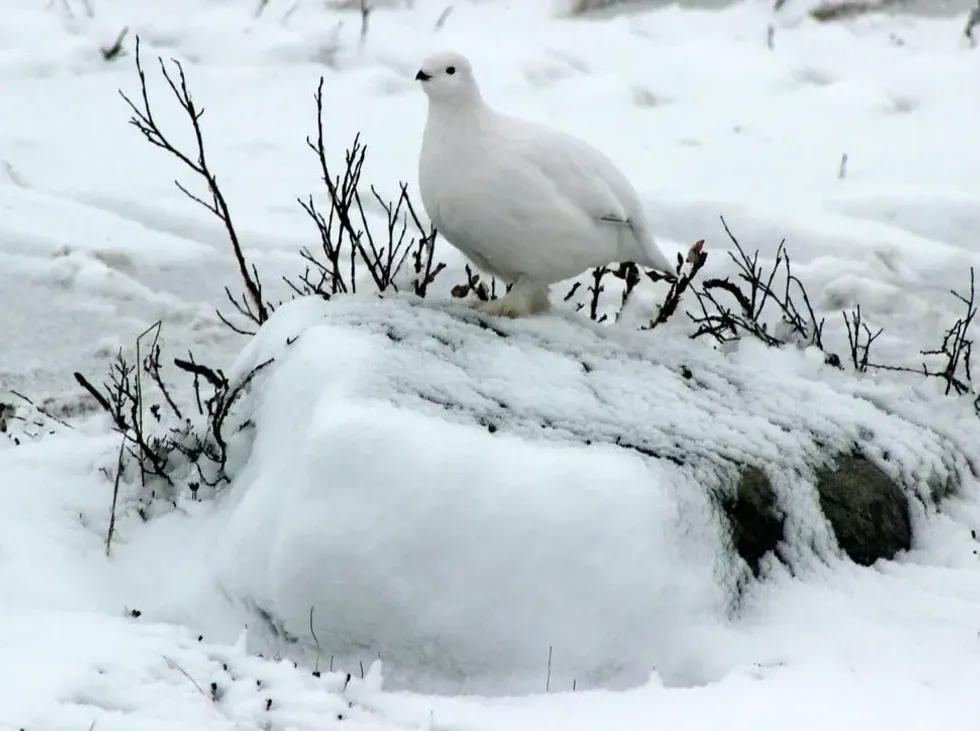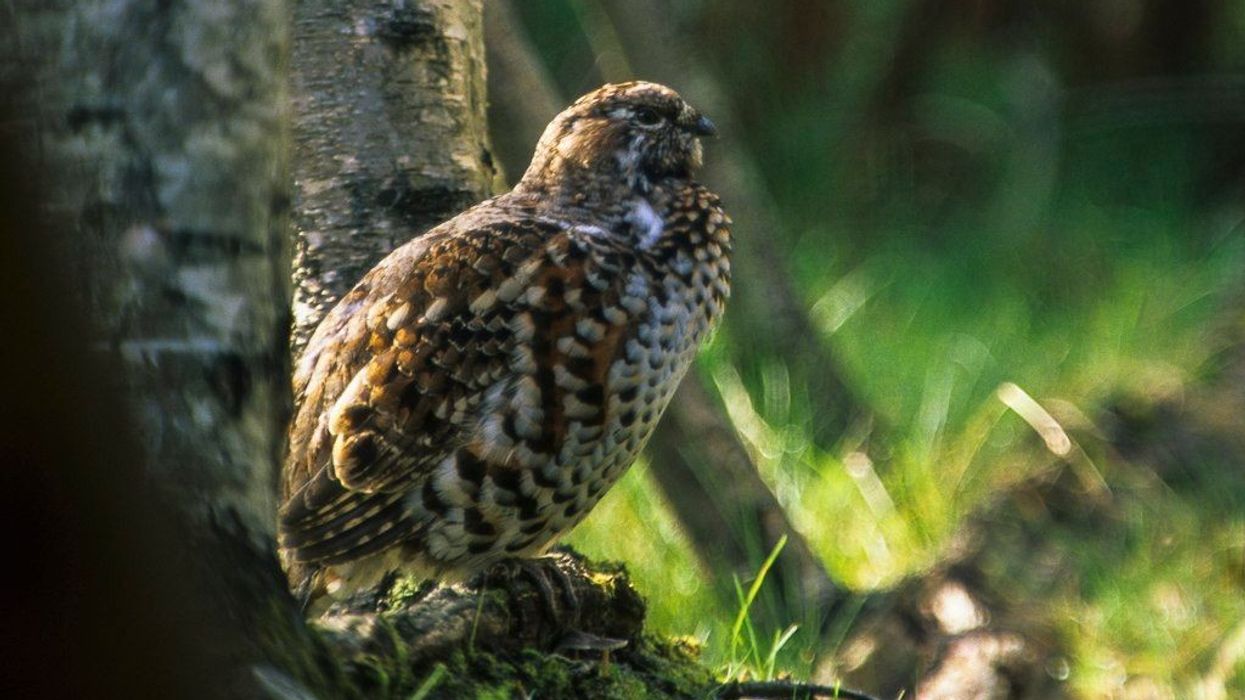The willow ptarmigan is a very interesting bird to learn about. It is a subspecies of the grouse family and goes by the name of red grouse in Britain. The geographic range of this red grouse subspecies includes Alaska (northern and south-eastern), Canada, British Columbia, and other arctic and tundra areas.
However, the range of their populations does not remain the same year-round. The red grouse changes its range in winter, as it is a migratory bird.
It then moves towards a warmer geographic range from the tundra and arctic range. The bird lives in flocks during winter, and their feathers also turn white in winter. Like the habitat, the bird also does not remain the same color year-round.
In summer or spring, their feathers are generally brown. Interestingly, in summer, the willow ptarmigan grows very intolerant towards others of its kind.
However, this is not the case when they live in flocks during the colder seasons. They also live in flocks to protect themselves from predators. Keep reading to know more facts about this grouse!
For more similar content, check out our articles on spruce grouse and acorn woodpecker.
Willow Ptarmigan Interesting Facts
What type of animal is a willow ptarmigan?
The willow ptarmigan (Lagopus lagopus) is a type of bird.
What class of animal does a willow ptarmigan belong to?
The willow ptarmigan belongs to the class Aves which is the class that all birds belong to.
How many willow ptarmigans are there in the world?
As per the latest studies, the various populations of willow ptarmigan stand at 40,000,000.
Where does a willow ptarmigan live?
The willow ptarmigan is a resident of the tundra habitat. They prefer to live in subalpine and subarctic regions, which are covered with forests and are situated on the slopes of mountains.
North American countries like Victoria Island, Banks Island, Southampton Island, south-eastern and northern Alaska, Alberta, Manitoba, Quebec, Melville Island, Canada, Boothia Peninsula, Baffin Island, central parts of British Columbia, Saskatchewan, Ontario, and Newfoundland are home to many willow ptarmigan birds. Apart from their native range of North American countries, the willow ptarmigan is also native to Europe and Russia.
They can be found in some parts of Asia such as Kazakhstan. Other native places of the willow ptarmigan include Scandinavia, Greenland, and the northern regions of Mongolia.
What is a willow ptarmigan's habitat?
The willow ptarmigan is subspecies of grouse that resides in areas with thick vegetation and trees, such as forests. During the spring and summer months, they like to dwell in areas that are moist and humid.
Such regions include beaches, treelines, tundra, and arctic habitats. In some parts of North America where these birds are found in abundance, they can be spotted near willows or birches, thus giving them the name willow ptarmigan.
During the winter months, a willow ptarmigan moves to areas with thicker forestation and valleys. Interestingly, when the days become colder, a male willow ptarmigan remains in subalpine zones while a female willow ptarmigan, along with their young ones, fly away to boreal forests.
Who do Willow ptarmigans live with?
The willow ptarmigan (Lagopus lagopus) is usually a solitary bird. This means that willow ptarmigans live on their own, especially during spring or summer. However, they pair up during the breeding season. Interestingly, they live in groups during the winter months.
How long does a willow ptarmigan live?
The average lifespan of a willow ptarmigan ranges anywhere between one and seven years. In the wild, they can live up to a maximum duration of nine years.
How do they reproduce?
The willow ptarmigan attains sexual maturity at the age of one year. Generally, a willow ptarmigan is monogamous.
However, certain males can be polygamous and have larger territories than monogamous males. A male willow ptarmigan sets a mark on its territory about a fortnight before the female willow ptarmigan's arrival.
Certain males may fight amongst themselves over territory. After establishing his ground territory, the male ptarmigan starts his courtship with a female through the display of certain activities such as waltzing, bowing, fanning of the tail feathers, wagging his head, and stamping in a quick motion.
During the onset of the breeding season, a male's feathers change color to brown and white. Meanwhile, the red comb on the top of their heads becomes more vibrant as a breeding signal.
Male and female birds start breeding after the female willow ptarmigan displays a position of submission to the male. The couple then indulges in nesting, and four to 14 eggs are laid.
The incubation period takes place around June and July for a duration of 20 to 23 days. Following the incubation period, chicks hatch from the eggs.
What is their conservation status?
The willow ptarmigan (Lagopus lagopus) has been listed under the category of Least Concern by the International Union for Conservation of Nature (IUCN) Red List.
Willow Ptarmigan Fun Facts
What do willow ptarmigan look like?
Willow ptarmigans are birds of medium stature. It has a medium-sized body with a short tail. Like their tail, their beak is also short but it is very strong and hard. Their plumage is brown.
However, this plumage turns white in winter, giving the bird a special winter plumage. The top of their head is adorned with a red comb. The length of both of their wings is more than that of their body. The wings have a span of 24-26 in (60-65 cm).
How cute are they?
The brown willow ptarmigan is somewhat cute to look at. Their structure resembles that of a chicken. They are not too colorful either, however, they are not ugly birds. What deducts some brownie points from their cuteness factor is their aggressive behavior, especially exhibited by males during the breeding season.
How do they communicate?
The primary mode of communication for willow ptarmigans is through sound. They also communicate through the sense of touch and sound, coupled with chemical signals. They have innumerable vocal signals and as many as 11 different calls.
Males display sounds like a 'kohwa', and 'aroo' which are absent in females. The calls of males are significantly louder and more modulated. Females are also devoid of flight songs, unlike males.
Both genders have similar modes of communicating through sound when it comes to warnings, breeding, and protecting their territories. Adult willow ptarmigans use sounds to interact with their counterparts of the other gender, as well as their chicks. For instance, females usually 'purr' or moan while communicating with their chicks.
How big is a willow ptarmigan?
The length of a brown willow ptarmigan ranges anywhere between 14-17 in (35-44 cm). It is about the same size as a house sparrow.
How fast can a willow ptarmigan fly?
The flight speed of a willow ptarmigan is not known. However, they are known to be swift fliers.
How much does a willow ptarmigan weigh?
The average willow ptarmigan weighs approximately 15-29 oz (430-810 g).
What are the male and female names of the species?
Like all other birds, a male willow ptarmigan is called a cock, while a female willow ptarmigan is called a hen.
What would you call a baby willow ptarmigan?
Baby birds of the willow ptarmigan species are called chicks.
What do they eat?
The feeding habit of a willow ptarmigan is omnivorous. A young willow ptarmigan survives by feeding on spiders and insects.
Young ones avoid feeding on vegetation such as plants and seeds because they are more difficult to digest. As young ones grow into adults, they feed on a variety of berries during the spring and summer months. Adult ptarmigans have a diet of vegetation like leaves, seeds, flowers, twigs, and buds.
As the names suggest, the willow ptarmigan feed on willows and other shrubs like birch and alder. These birds are known to feed on grit to assist in the digestion of their diet.
Are they dangerous?
Willow ptarmigans do not usually pose any threat to humans. However, this bird displays signs of danger to other ptarmigans. This is when they jump around, flap their wings, and chase another bird. These are usually seen during the breeding season as a sign of protecting their territories or young ones.
Would they make a good pet?
Willow ptarmigans should not be kept as pets because they are wild animals. They should be allowed to live in cold climates and to migrate. Also, they are solitary animals so they would not be the most exciting pet to keep.
Did you know...
There are three species of the ptarmigan which are the willow ptarmigan, the rock ptarmigan, and the white-tailed ptarmigan. The willow ptarmigan is considered to be a more significant species than the rock ptarmigan or the white-tailed ptarmigan.
This is because they have a special winter plumage where their feathers turn white in winter, unlike the rock ptarmigan or the white-tailed ptarmigan.
Why is the willow ptarmigan Alaska's state bird?
The willow ptarmigan was designated as the state bird of Alaska in North America as it is the bird that is found in most abundance in this particular state of North America. The willow ptarmigan has the capability of blending in with the natural snowy white surroundings of Alaska.
The state bird also can change the color of its feathers. It was named the Alaskan state bird in 1955.
However, the status of the willow ptarmigan being the Alaska state bird only became official in official 1960. The status of this state bird came at a time when Alaska was made the 49th state of North America.
How do ptarmigans survive in the winter?
A major adaptation of willow ptarmigans is the ability to change their feather colors. This change occurs in winter when their plumage changes from brown to white. During winter, tiny sockets called barbules which are located beneath the feathers become devoid of any melanin pigment.
This causes discoloration. Instead of pigment, barbules are filled with air which keeps the bird warm in the cold weather.
The bird also grows feathers on its feet during the winter season, giving them feathered feet. They are among the very few birds that have feathered feet. They also live in a family of flocks during the winter months as it helps them against falling prey to certain predators.
Here at Kidadl, we have carefully created lots of interesting family-friendly animal facts for everyone to discover! Learn more about some other birds including guinea fowl, or house finch.
You can even occupy yourself at home by drawing one on our willow ptarmigan coloring pages.










